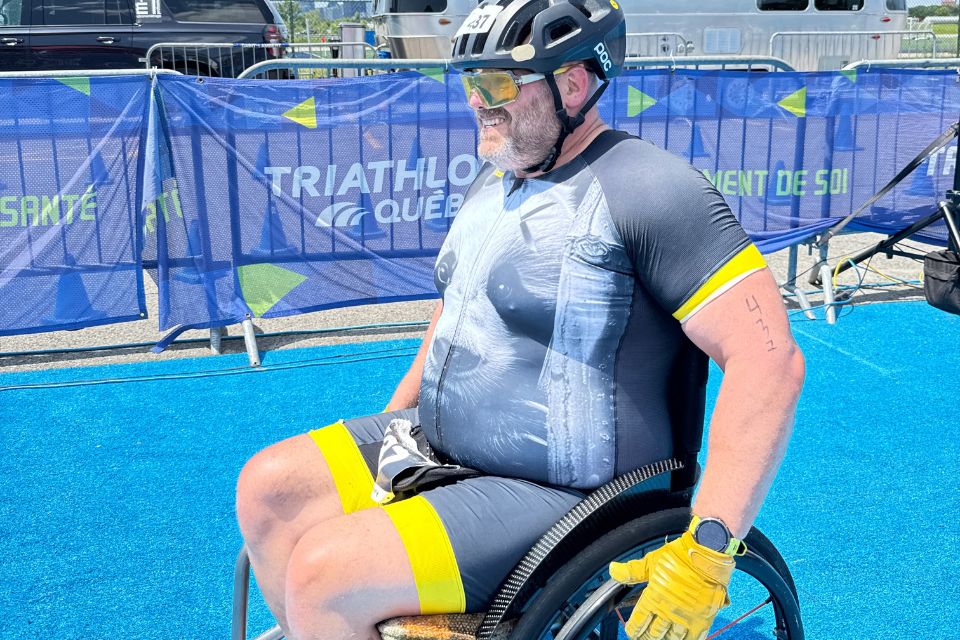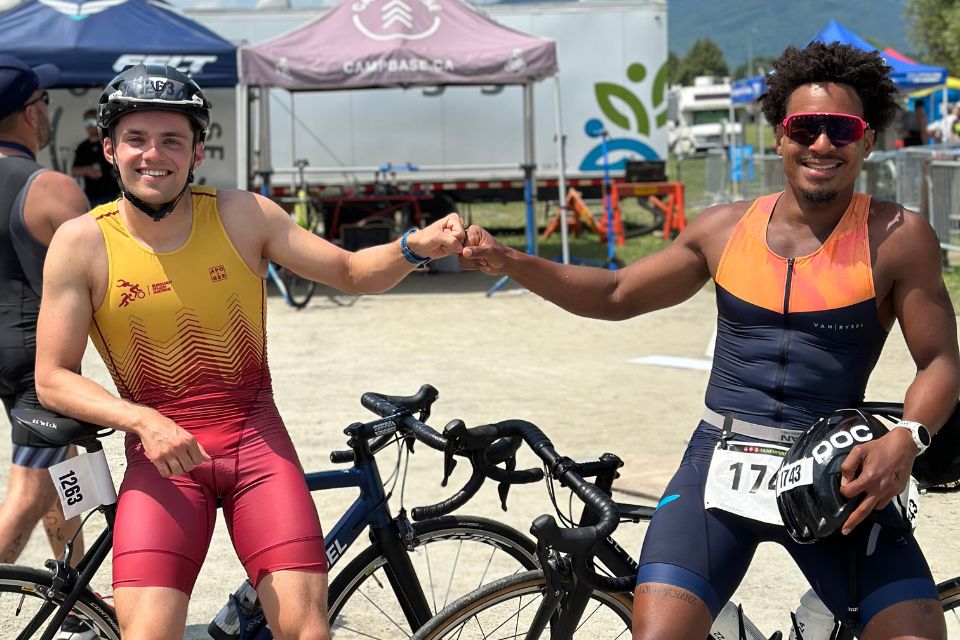Paratriathlon equipment
Bicycle types

The handcycle is a hand-powered bicycle that allows the rider to use his or her arms to propel the bike. The rider lies on the bike, which has three wheels, one of which is steered, a chain and two cranks instead of pedals.

The tandem is a bike designed for athletes in the “visually impaired” category, i.e. athletes with partial or total visual impairment, which accommodates the athlete and his or her guide. The guide is positioned at the front, and the athlete at the rear. Both cyclists pedal to propel the bike.

An adapted bike is one to which certain adaptations have been made in order to facilitate riding according to the athlete’s disability. These adaptations may concern one or more components of the bike.

The tricycle is used by athletes with balance problems who are unable to cycle on a regular bicycle. Although accepted at Triathlon Québec paratriathlon events, the tricycle bike is not recognized as an official paratriathlon category by the International Federation.
Racing chair
The racing chair is used on the running section by paratriathletes who are unable to run. These athletes normally use a handcycle for the bike portion. The racing chair has two large wheels at the rear and a small front wheel. The front wheel must be fitted with a brake.
Special equipment for the visually impaired
In addition to the tandem, helmet and running shoes, a few special items of equipment are required for paratriathletes in the “visual disability” category:
The guide must swim alongside the paratriathlete, with a maximum distance of 1.5 m between the guide’s head and the athlete’s head. The tether must be a brightly coloured or reflective elastic cord measuring a maximum of 80 cm when not under tension. It can be attached anywhere on the athlete’s body.
Each athlete must be attached to his or her guide during the run. The link must have a maximum length of 0.5 m, be made of a non-elastic material and must not store energy or allow the athlete to gain in performance.
All paratriathletes in the “visually impaired” category (PTVI1/non-sighted) must wear opaque goggles that do not allow any light to pass through during the entire event. Opaque swimming goggles may only be removed once the athlete and guide have joined their tandem bike in the transition area. Bike and run goggles must be used from the swim-bike transition area until the athlete and guide cross the finish line. Goggles must be checked by the Technical official before the race.
Sports equipment suppliers
You have a few options for lending or renting equipment.
- For tandem and handcycle rentals or loans, please contact the Bromont National Cycling Center.
- For the loan or rental of racing wheelchairs, please contact Parasports Québec.
Validation of hardware adaptation
All adaptations (bicycle) and all links between the paratriathlete and the guide (“visual disability” category) for both swimming and running must be validated by the event’s Technical official or by a representative of the Federation.
The paratriathlete can have his/her adaptation validated by the Federation by e-mailing the form, photos and supporting documents to info@triathlonquebec.org.

FAQ paratriathlon


